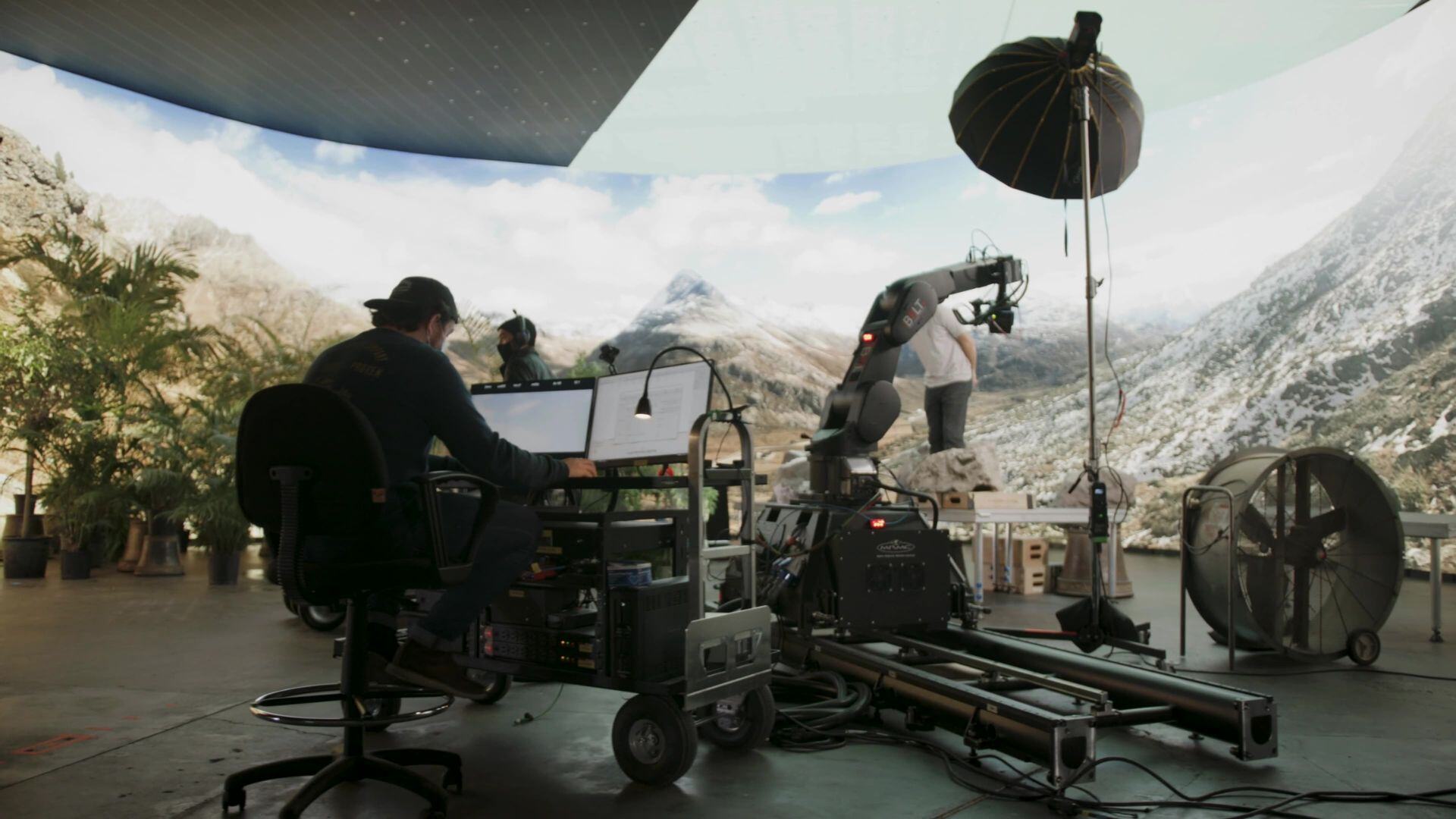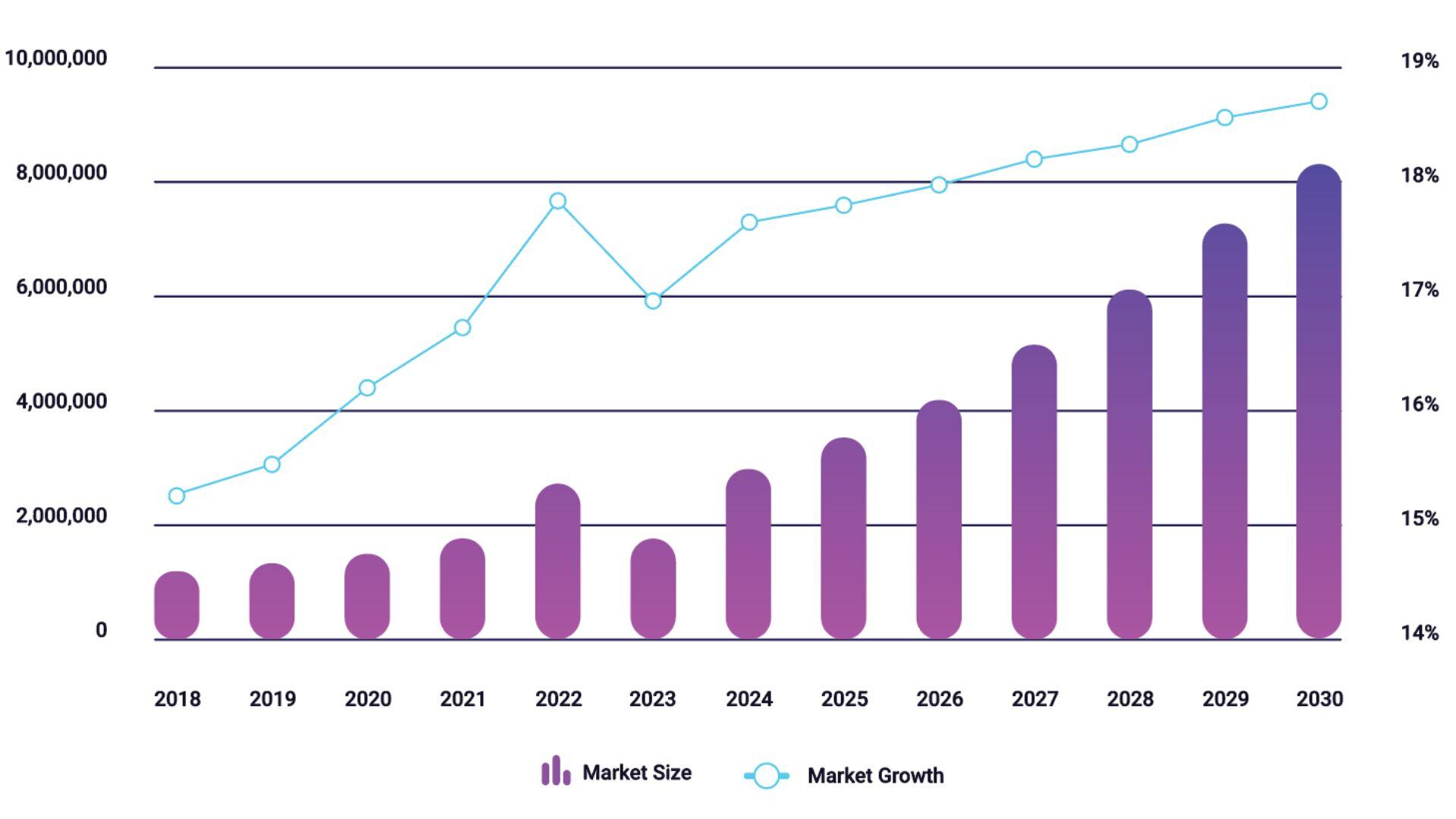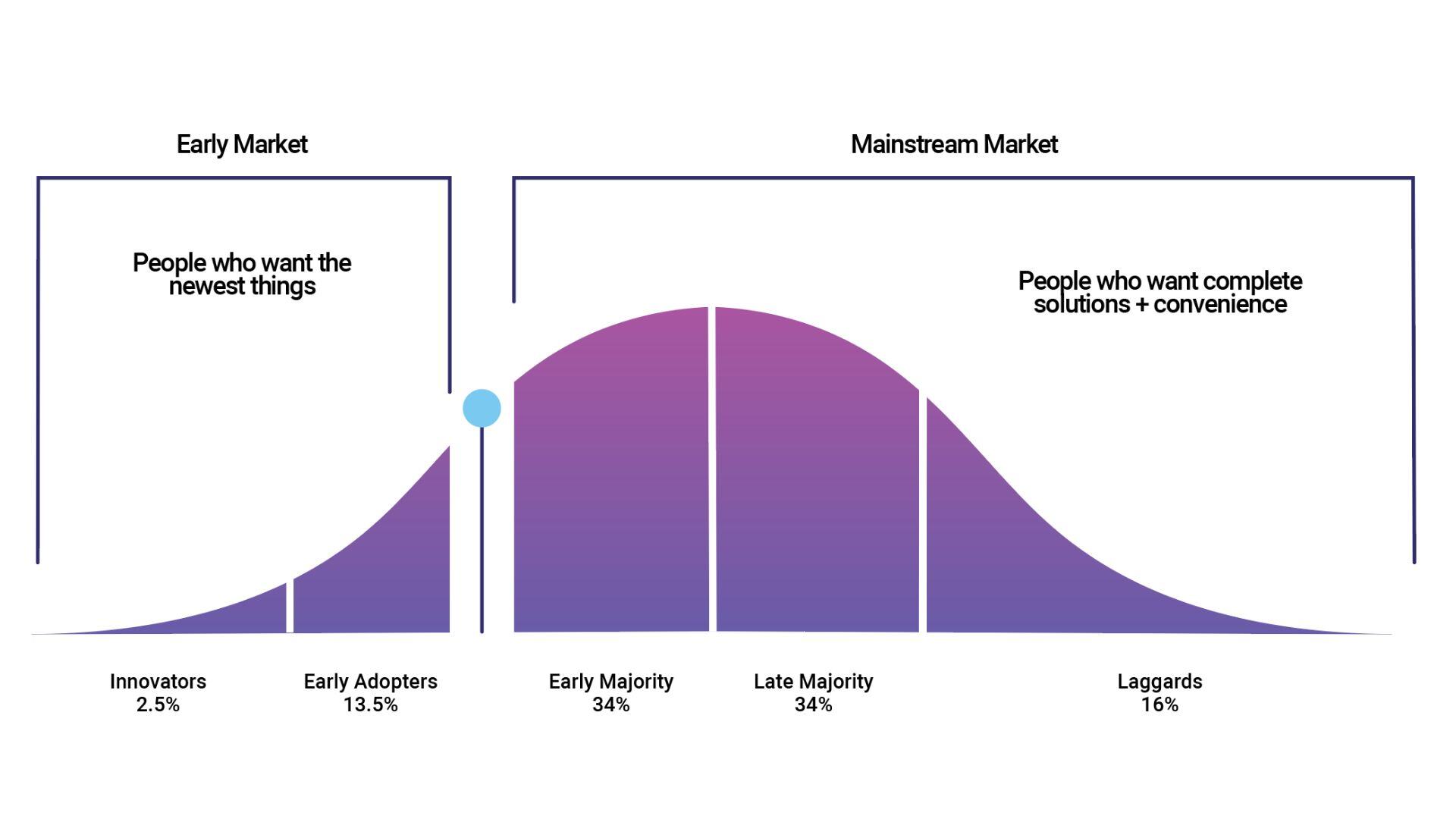
In 2024, the virtual production industry is witnessing significant changes and growth. Following last year's labor strikes that severely impacted the media and entertainment industry, virtual production has rebounded with a 35% growth in the corporate and education sectors. Here are five key takeaways from Vū CEO Tim Moore's recent 'State of Virtual Production' report.
1. We're at the tipping point of advanced computer graphics
Innovations in real-time computer graphics and AI-powered workflows are allowing creators to make content at superhuman speeds. For years, the human brain was the greatest processor in the world, but now there is a new species of AI in town and it’s reaching human-like capabilities in almost every category of communication, including visual communication.
Computer-generated visuals are so advanced that the human brain can no longer distinguish what’s real and what is not. With new advanced technologies like Generative AI and Real-Time Virtual Production, photo-realistic imaging is not just a creative aspiration, it’s a widely accessible reality.

2. The AI crash is coming

Global virtual production market size
3. Rise of the smaller virtual studio
From a global virtual production market perspective, both market size and distribution of studios globally across the Americas, EMEA and Asia Pacific are relatively balanced while individual territories like the US, UK and Australia have become early regional leaders. However, the trend is that today’s virtual studios aren’t getting larger, they’re getting smaller, with thousands of microformat virtual studios expected to hit the market in 2025.

Global virtual production market size
4. New real-time creative workflows
Over the past year, the Virtual Production landscape has witnessed a surge in innovative tools entering the market almost monthly. New 3D scanning solutions leveraging technologies such as NERFs and Gaussian Splatting now enable users to effortlessly upload basic video scans of locations from their smartphones into applications like Volinga and Luma.ai, generating 3D virtual environments in minutes rather than weeks. Markerless tracking solutions like Move.ai and Theia3D are revolutionizing character animation by replacing cumbersome body suits with standard consumer cameras, facilitating swift 3D animations.
Generative AI tools such as Cuebric and Vu.ai are enabling real-time virtual background creation, facilitating instant on-set adjustments. Additionally, a growing number of studios are embracing hybrid 3D workflows like 2.5D and 3D Depth Maps, streamlining scene creation where full 3D isn't essential.

Crossing the chasm
Among these advancements, generative AI for 2D plates emerges as the most adopted workflow, owing to its simplicity for newcomers and rapid creation compared to full 3D environments. Noteworthy contenders like Runway, Sora, and Pika Labs are engaged in a cloud-based studio creation race. Google has also joined the fray with Google VEO, an evolution of the original Imagine announced in 2021. These fully synthetic AI text-to-video generators promise to revolutionize creative workflows, enabling studios to instantly generate 2D video plates as virtual backgrounds and seamlessly integrate generated video directly into their edits, bypassing traditional studio setups.
And all of this technology progress is making virtual production faster, easier and allowing artists to create content at the speed of thought.
5. Expanding Virtual Production cases in corporate and higher education
Virtual production studios in the corporate market saw the most growth year over year, growing 36% and accounting for 28% of all new studios built last year. This trend is anticipated to grow due to companies internalizing more productions and enhancing their existing studio infrastructure. Corporate internal studios, like Arthrex's 100 ft. x 20 ft. LED Volume, have embraced virtual production, resulting significant benefits. These include a noteworthy 56% surge in output and a substantial 72% decrease in time expended compared to traditional production methodologies. The streamlining of travel requirements and reduction in post-production timelines emerge as essential factors augmenting operational efficiency in these setups.
Another fast-growing market for virtual production over the past 3 years has been higher education, but it’s not just being used for education purposes anymore. A prime example is the University of Florida's innovative utilization of virtual production through SwampVū, a cutting-edge facility offering much more production value to the institution's athletic department. It serves as a platform where athlete recruiting with Name, Image, and Likeness (NIL) considerations, showcasing the transformative potential of virtual production in collegiate sports.

Today, technology empowers companies to elevate the value of their services above their competitors. The Big Tech sector is experiencing a staggering 4x growth compared to the legacy media market as the media industry undergoes a transformation, it seeks innovative ways to capitalize on this growth. This is the promise Virtual Production offers, to move the media production industry from a talent-driven service to a tech-enabled platform. As we move from analog green screens to digital big screens, the shift to virtual production has opened new opportunities for growth in an industry that has seen its share of hard times last year.
It's not how big you are, it's how big you think. The change makers who embrace transformation not just as a strategy but as a habit often times end up changing much more than just themselves - they change the market. The winners in this year’s market will certainly be a few of the big tech incumbents and legacy studio players but it will also be a handful of passionate entrepreneurs who are crazy enough to believe, that in times of great transformation, passion has a funny way of trumping logic.
Read the full white paper here. And watch Tim Moore from Vū sharing his insights on virtual production below.


Comments